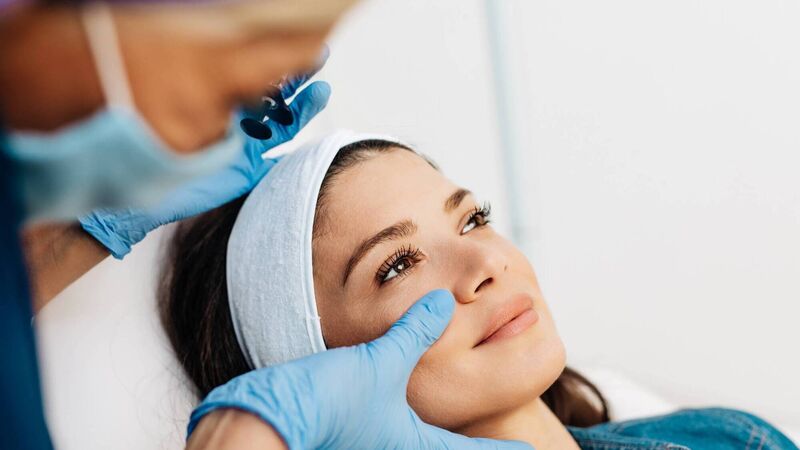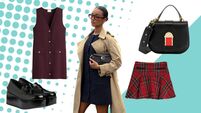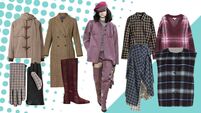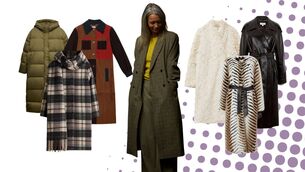The Skin Nerd: Aesthetic treatments that make a visible difference

Pic: iStock
You don’t have to be an expert to know the aesthetic market has exploded in recent years.
Far from something discussed in hushed tones, treatments are being carried out in lunchbreaks, plastered all over social media, and offered in more practices than ever before.
In fact, the global aesthetic medicine market size was valued at US$99.1 billion in 2021 and is expected to expand at a compound annual growth rate of 14.5% from 2022 to 2030.
My opinion on tweakments overall is that they are something that are personalised to everyone if you so wish.
Many people look to aesthetics as a way of delaying the visual signs of ageing and whilst this can be effective in the short term, it should not be seen as a method used in isolation.
Instead, it is important to prioritise skin health, and this means I will always advise looking at how we are treating our skin inside, outside, and on top.
If we are to consider ageing in terms of extrinsic and intrinsic ageing, we have numerous variables that are dependent on every individual personally, such as levels of sun exposure and genetic factors.
When we look at tweakments, we typically see that prevention is better than a cure, so we need to examine the health of the skin and look at how we care for it.
Examples of this include the use of SPF, vitamin A, C, and E, and antioxidants. We can then see if we can improve overall skin health by combining with treatments. Considering this, I would recommend taking a 360-approach starting with skin health and aligning with supportive treatments (tweakments).
As a skincare expert who often gets asked to provide commentary on beauty trends, I have tried many treatments to allow me to form a first-hand opinion.
This has enabled me to gain a solid understanding of the procedure from both sides of the treatment and to build my own playbook of the most effective treatments available...
Although a relatively new cosmetic treatment, platelet-rich plasma (PRP) has been used since the early 20th century by physicians looking to speed up wound healing.
Now more widely utilised for cosmetic reasons, PRP is injected into the skin to boost skin regeneration and stimulate collagen production.
To get nerdie, blood is drawn before the red blood cells are separated from the platelets and growth factors. Growth factors are proteins that have an important job to do when it comes to skin health, stimulating the biochemical pathways promoting skin tissue repair and regeneration, as well as working to increase collagen and elastin production.
Once this platelet-rich blood is injected back into the skin, the treated area is said to be tightened and appear plumper. PRP can also be used for hair restoration and is commonly used in hair transplants.
PRP can treat:
- Sagging skin
- Dark circles
- Fine lines/wrinkles
- Acne scars and stretch marks
I opt to receive PRP as I naturally have a hollow underneath my eye and I love the fact that a couple of weeks after the treatment, I can see the discoloration fade, the thinness of the area plumper, along with a marked improvement of the general hydration levels under my eyes where I wouldn’t opt for filler.
I also love the fact that it is my body regenerating itself and find it fascinating that my own body's growth factors are what is stimulating this result.
I’ve had it done on my lips as well because I have polyps on my nose, which means that I don’t inhale and exhale correctly and my nose doesn’t filter all of my incoming air.
Having PRP means that I don’t need an excessive amount of lip balm as my lips regenerate themselves and are nowhere near as dry.
Botox and other anti-wrinkle injections are increasingly being considered a common and effective method of enhancing and complementing skincare routines.
But how exactly do they work? ‘It blocks the pre-synaptic nerve synapses preventing the release of neurotransmitter acetylcholine at the neuromuscular junction reducing muscle activity and weakening the affected muscle,’ explains Dr Mairead of Celeste Medical (celeste-medical.ie).
‘This temporarily paralyses, reducing the contraction of the facial muscles and alleviating the wrinkling of the overlying skin.’
Anti-wrinkle injections are also being used more frequently as a preventative measure as people by those in their late 20s and 30s.
How long does it take to see the results? You should notice some effect after about 72 hours, but it typically takes two weeks to see the full effect. The effect then typically lasts 3-4 months.
- Botox used to treat lines in the following areas:
- Between the eyebrows and forehead
- Upper lip and bunny lines
- Around the eyes
Botox is a neurotoxin, and in my opinion is a science, a medicine and it’s an art whereby the practitioner must appreciate symmetry of the face and understand why they are injecting where they are injecting.
As it is a specialty, I select dermatologists that specialise in aesthetics alongside medicine such as The Institute of Dermatologists, Ireland, or doctors that specialise in it such as The Mulrooney Clinic.
When you are paralysing a muscle through Botox, it’s important that you are looking after not just the muscle but the skin and tissue on top to assist with the redness, texture, pigmentation, and pore size.
It is a multi-faceted, multi-layered approach towards paralysis of the muscles. I don’t believe that there is a set age for Botox, but chronologically I understand why people might want to investigate it as they near the 30-year-old bracket.
Enriched with a high concentration of hyaluronic acid, Profhilo has been described as an ‘intensive moisturiser’ for the skin.
The injectable treatment delivers deep hydration, helping the skin to retain water and effectively moisturising from within.
As well as improving tone and texture, one of the key uses of Profhilo is to address skin laxity.
Overall, Profhilo works to deliver an improvement in skin quality, with increased firmness and elasticity levels.
Effects are expected to last up to six months, with a minimum of two treatments recommended.
Those wishing to reduce the visible signs of an ageing complexion.
I have never had this treatment myself, but I have watched close friends and family have this and after just one session there is a noticeable difference in hydration levels of the skin.
Post session two, there is a comparable and significant difference in the volume of the face – the lift and benefits are dermal and undeniable.
Using cryolipolysis (a fat-freezing technique), Z-Lipo targets fat deposits throughout the body to reduce fat and aid body-contouring.
Requiring no downtime, this treatment has been described by The Institute of Dermatologists, Ireland as effectively ‘freezing away exercise-resistant stubborn fat from the waistline, neck, upper arms and thighs.’
What sets this apart from other forms of fat-freezing treatments is that Z-Lipo incorporates pulsed vacuum suctioning to break down the fat cells pre-freezing.
This is then said to further boost metabolism and lymphatic drainage. Z-Lipo is often used in combination with Z-Wave to enhance fat reduction and tighten the skin for optimal results.
Those looking for fat reduction and contouring benefits.
To date, I have had two sessions underneath my jaw and can say that Z-Lipo is one of the most impactful treatments that I have had.
I decided to undertake this treatment as regardless of how much I exercise, I always have this stubborn ‘pocket’ that won’t shift.
In my profession, I spend a lot of my time looking at myself on Zooms and Teams, and on social media, there are a lot of angles that you become aware of yourself that you don’t see when you simply look in the mirror.
The results have been great – I can confirm that it truly works on stubborn areas - my side profile has completely changed because of Z-Lipo.
It is quite a comfortable, 45-minute treatment and it’s about 8-12 weeks after each session that you see the difference.
I am genuinely blown away by it because never have I had the angle of the jaw that I have, even when I was in my early 20s and perhaps a dress size or two smaller.










